Fill in the Blanks - Duolingo English Test (2025)
The Fill in the Blanks question on the Duolingo English Test is designed to test your vocabulary. Learn the most effectives strategies and tricks for this question type!

Table of Contents
- What is the "Fill in the Blanks" question type?
- Tips to do well on the "Fill in the Blanks" question type
- Read the entire sentence
- Check that your answer makes sense
- Identify the relationship between the incomplete word and the rest of the sentence
- Figure out the part of speech of the incomplete word
- If you're not sure, guess
- Proofread your response
- Know that questions may get harder
- How to practice "Fill in the Blanks" questions

What is the "Fill in the Blanks" question type?
On a Fill in the Blanks question, you will be given a sentence and one of the words will be missing letters. It is your job to complete the word.
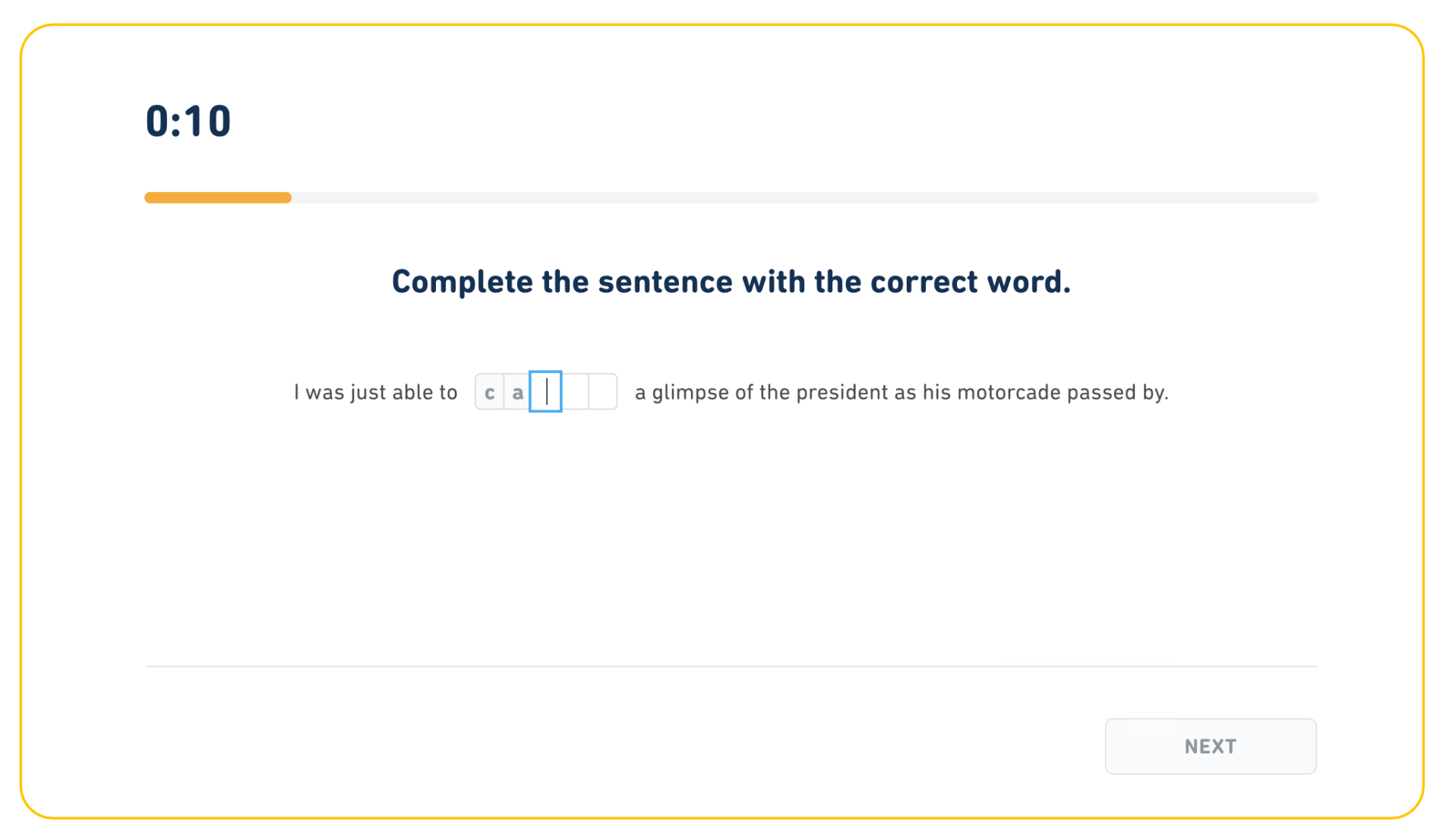
This question type appears 6 to 9 times. It counts toward your Reading, Literacy, and Comprehension subscores.
Tips to do well on the "Fill in the Blanks" question type
Read the entire sentence
As Duolingo explains, "This question assesses the depth and breadth of your vocabulary. It doesn't just assess that you know a word, but that you know how to use the word in context." In order to gain that context, you need to read the rest of the sentence.
Check that your answer makes sense
Even if you fill in the letters to create a word, that doesn't mean that the word you filled in is correct. You have to check that the completed word makes sense in the passage.
For example, let's say you fill in form for this question:
It fits and it's even a verb, but it's not the right answer. What does "form your water bottle with water" mean?
The correct answer is fill:
Fill makes a lot more sense in the passage.
Identify the relationship between the incomplete word and the rest of the sentence
Figuring out the role of the incomplete word in the sentence gives you a powerful clue. For example:
After reading the rest of the sentence to gain context, we can then ask ourselves:
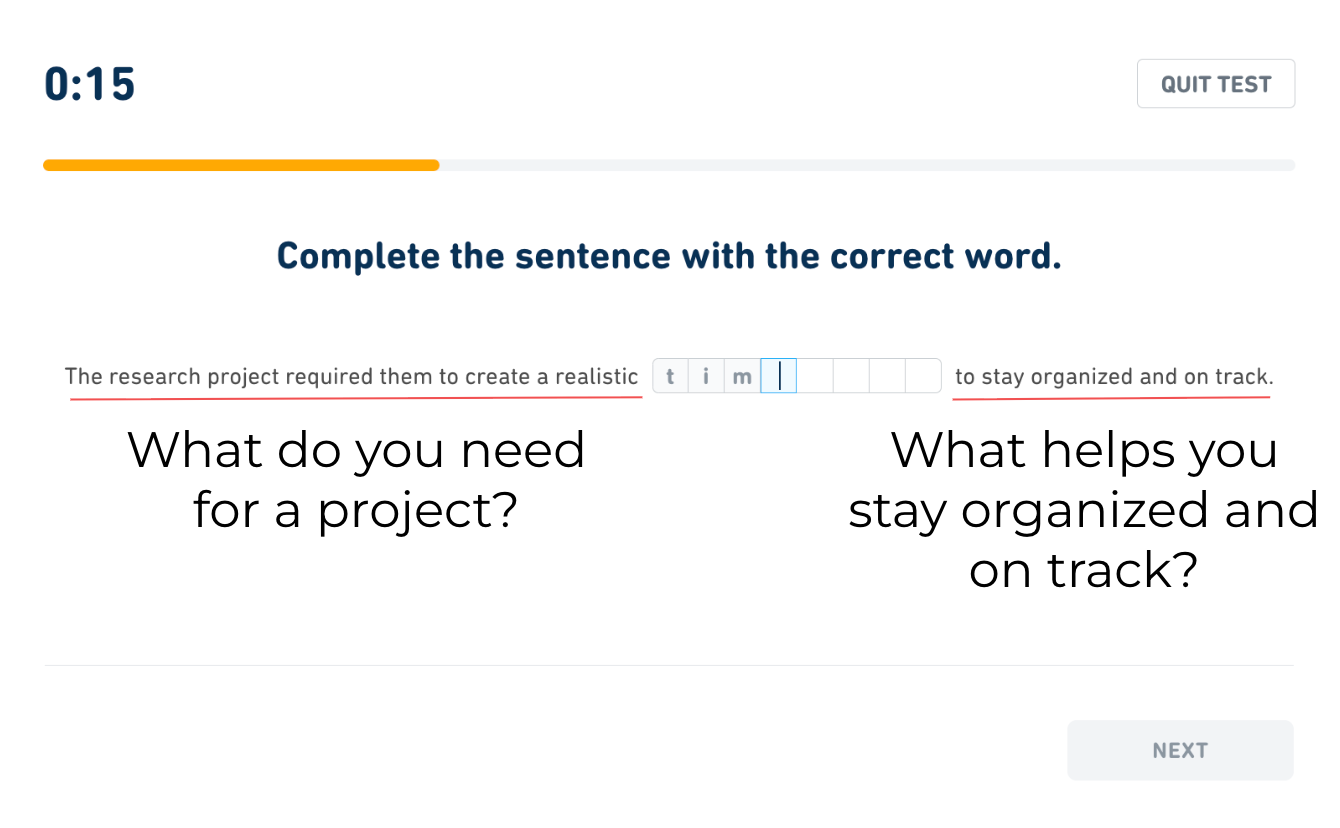
Now we know that the incomplete word must be something that is required for a project and that helps you stay organized and on track.
The answer becomes clear: timeline.
Here is another example:
By analyzing the rest of the sentence, we can determine that the first part of the sentence is a cause and the second part is the effect:
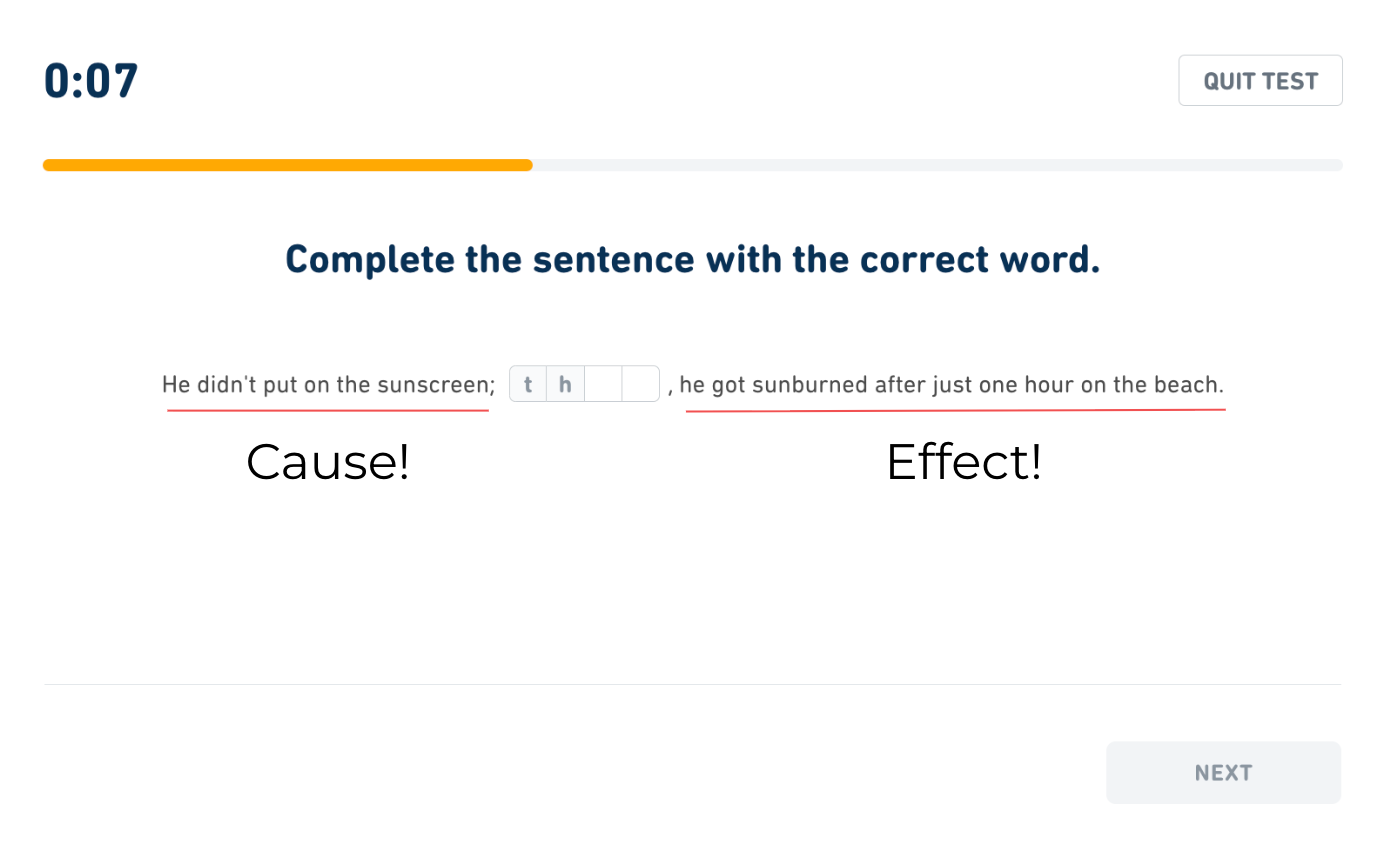
Therefore, the incomplete must be a word that shows cause and effect, like because or therefore. However, those don't fit, so we need a synonym that does.
The answer again becomes clear: thus.
Figure out the part of speech of the incomplete word
If you can determine whether the incomplete word is a noun, verb, adjective, preposition, adverb, etc., then you can quickly narrow down the possibilities.
For example:
a is an article, and articles always come before nouns. historically signficant are modifiers, which also come before nouns. Therefore, we know that our incomplete word must be a noun.
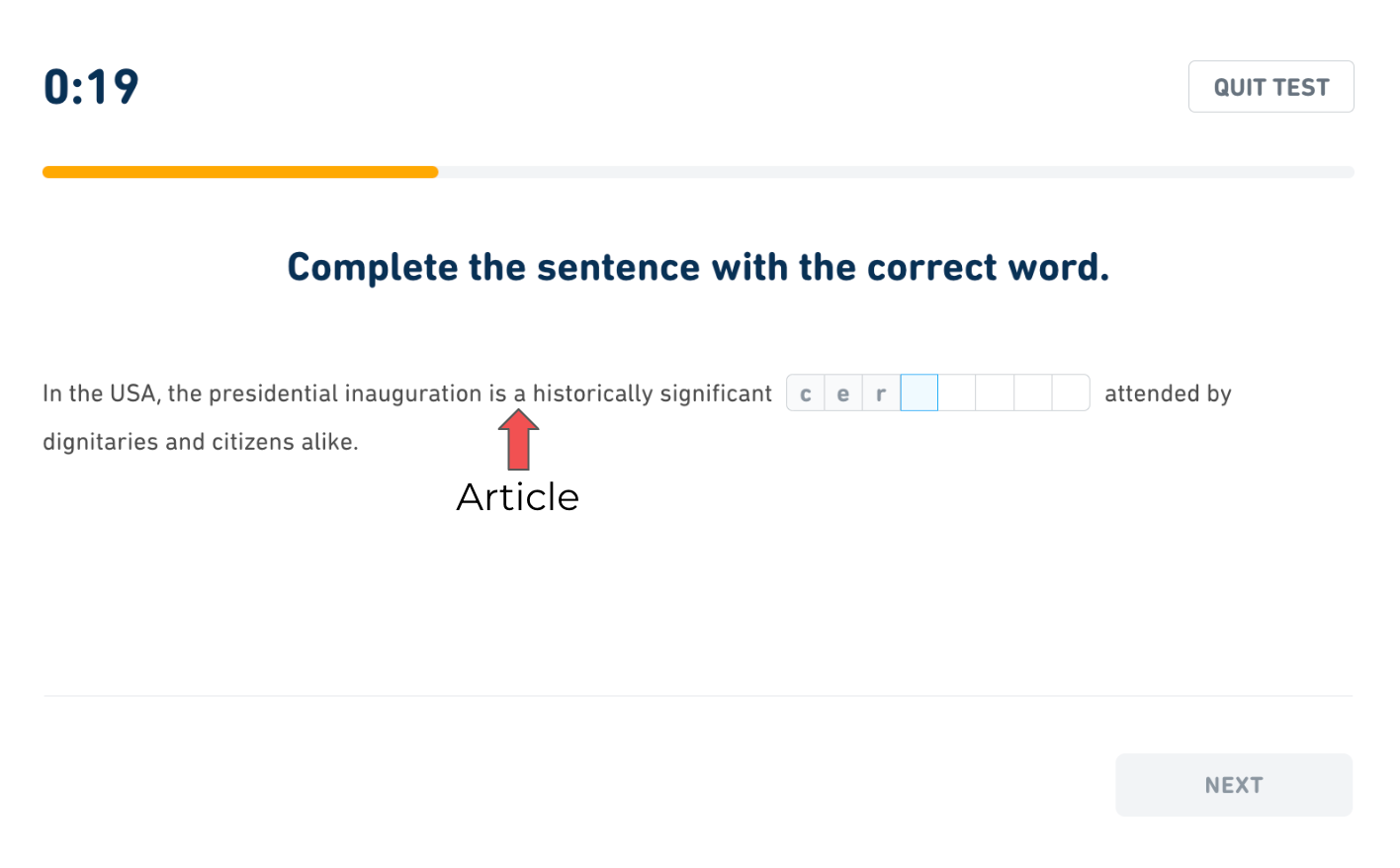
We also know that the incomplete word must be something similar to a presidential inaguration (which is when a new president takes office).
The answer is: ceremony.
👉 I would highly recommend taking the time to watch our full masterclass on Fill in the Blanks. In it, I go through more examples and explain these strategies in more detail so that you can really master them.
If you're not sure, guess
Duolingo does not take off more points if you answer incorrectly than if you leave it blank. So, there is no reason to leave an answer blank. However, you can't receive partial credit for Fill in the Blanks responses. You have to get every letter correct.
Proofread your response
Make sure you entered the letters that you meant to type! This in obvious one, but it's important to remember it because Fill in the Blanks are so fast, so it's easy to start rushing and forget this step. (In general, anytime you write on the DET, save some time to proofread to make sure you don't have any typos or other easy-to-fix mistakes.)
Know that questions may get harder
The Duolingo English Test is adaptive, which means that it adjusts to your level. If you get questions correct, the next questions will be more difficult. So, if you think the Fill in the Blanks questions you're seeing on the test are getting harder and harder, that's a good thing!
How to practice "Fill in the Blanks" questions
You can practice an unlimited number of Fill in the Blanks question for free in Arno! Just go to duolingo.goarno.io and create your account. In fact, you'll be able to practice every question type on the DET for free. Every new user also gets a full, free mock test with subscores and detailed feedback on each of their responses. (You can also check out our paid features like instant scoring and detailed feedback on writing and speaking questions to see if it's worth upgrading.)

We also have a free Vocabulary Builder. We handpicked the most useful words for the DET and put them into collections to help you focus on different areas. One of the collections focuses on Fill in the Blanks and Read and Complete.
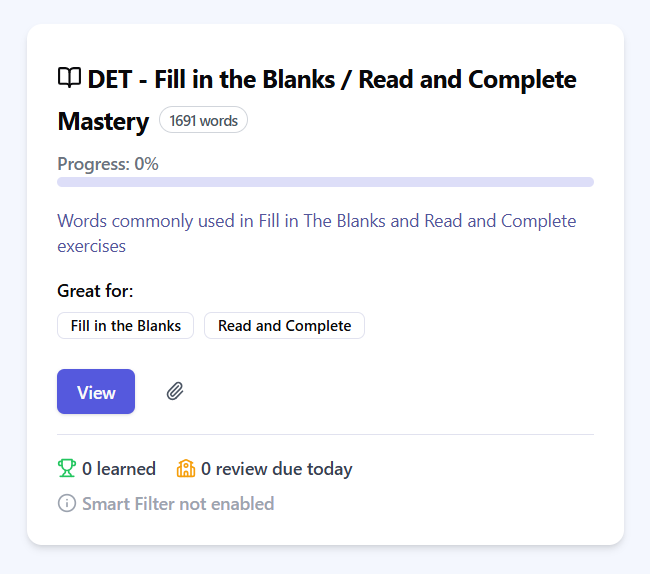
Happy studying!